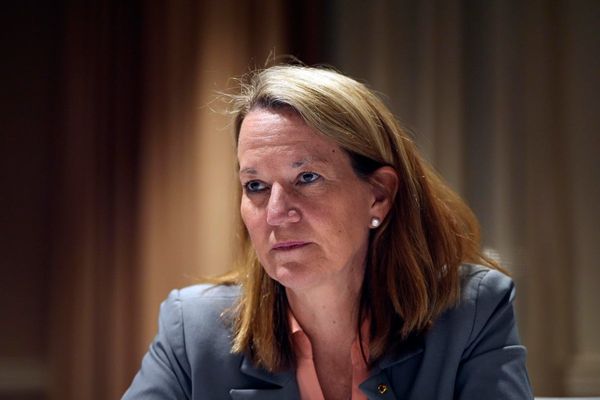Tuesday night’s State of the Union address marked a turning point even before President Joe Biden opened his mouth. The mere sight of the president entering the House chamber without a mask captured the improved state of the pandemic in America. The White House followed up Wednesday with a new strategy that marks a smarter approach at this stage of fighting COVID-19.
The White House trumpeted its 96-page National COVID-19 Preparedness Plan as a road map for guiding Americans “back to our more normal routines.” With infections and hospitalizations plummeting, and with 76 percent of the U.S. population having received at least one dose of vaccine, the new strategy addresses both the evolving threat of COVID-19 and the public’s fatigue with lockdowns, school closures and various levels of isolation over the two years of this pandemic.
The administration’s idea to switch from crisis mode to managing the outbreak is both good policy and good politics. It would continue promoting vaccines, including for America’s youngest children, accelerate research on COVID variants and vastly expand testing and treatment options and make them more easily available. The government would particularly focus on protecting Americans with compromised immune systems and increase support for those suffering from long-term impacts of COVID.
The plan calls for increased funding from Congress to help schools and businesses better handle any outbreaks (think upgraded ventilation systems) and for paid sick leave and tax credits for businesses to blunt the economic costs of COVID-related absentees and closures. The administration also pledged to be “the world’s arsenal for vaccines” as a means of promoting America’s interests in global health and financial security.
The plan comes barely a week after the U.S. Centers for Disease Control and Prevention loosened its guidance for wearing face masks. With widespread population immunity, the CDC said, it was time to consider several indicators, including COVID-related hospital admissions, to determine the specific risks to a community. Under a new three-pronged measure, the agency said, communities can calculate whether their risks are low, medium or high, with indoor masking recommended for high-risk areas only.
Christina Pushaw, a spokesman for Gov. Ron DeSantis, reasserted the governor’s skepticism about masks and contended that the federal government was “following Florida” in easing its endorsement of facial coverings. But the DeSantis administration is making false comparisons to defend its reckless, earlier policies. While the CDC estimates that more than 70 percent of the country can now end masking indoors, that’s less a repudiation of masking than a reflection of how far the country has moved over two years in preventing and treating infections. And the picture is hardly rosy in Florida. The CDC’s online threat estimator shows that the overwhelming majority of Florida still remains at high or medium risk, with the entire Tampa Bay area, and much of western Florida, still in the high-risk category.
The administration’s plan has evolved to meet the risks in real-time, and by looking beyond masking and closures, it seeks to depoliticize the fight against COVID-19, which may have the most long-lasting impact on controlling the virus. The administration and the CDC will need to convey these changes in clear, simple language. That’s not always been the case, which is somewhat understandable, given how scientists and public health officials struggled to calibrate their response as the COVID threat evolved. But Americans need to see how the gains in fighting the virus will improve their everyday lives. The sound policies of the last several weeks, and the encouraging visuals, should at least offer some confidence and relief to a weary nation.
____
Editorials are the institutional voice of the Tampa Bay Times. The members of the Editorial Board are Editor of Editorials Graham Brink, Sherri Day, Sebastian Dortch, John Hill, Jim Verhulst and Chairman Paul Tash. Follow @TBTimes_Opinion on Twitter for more opinion news.
____







